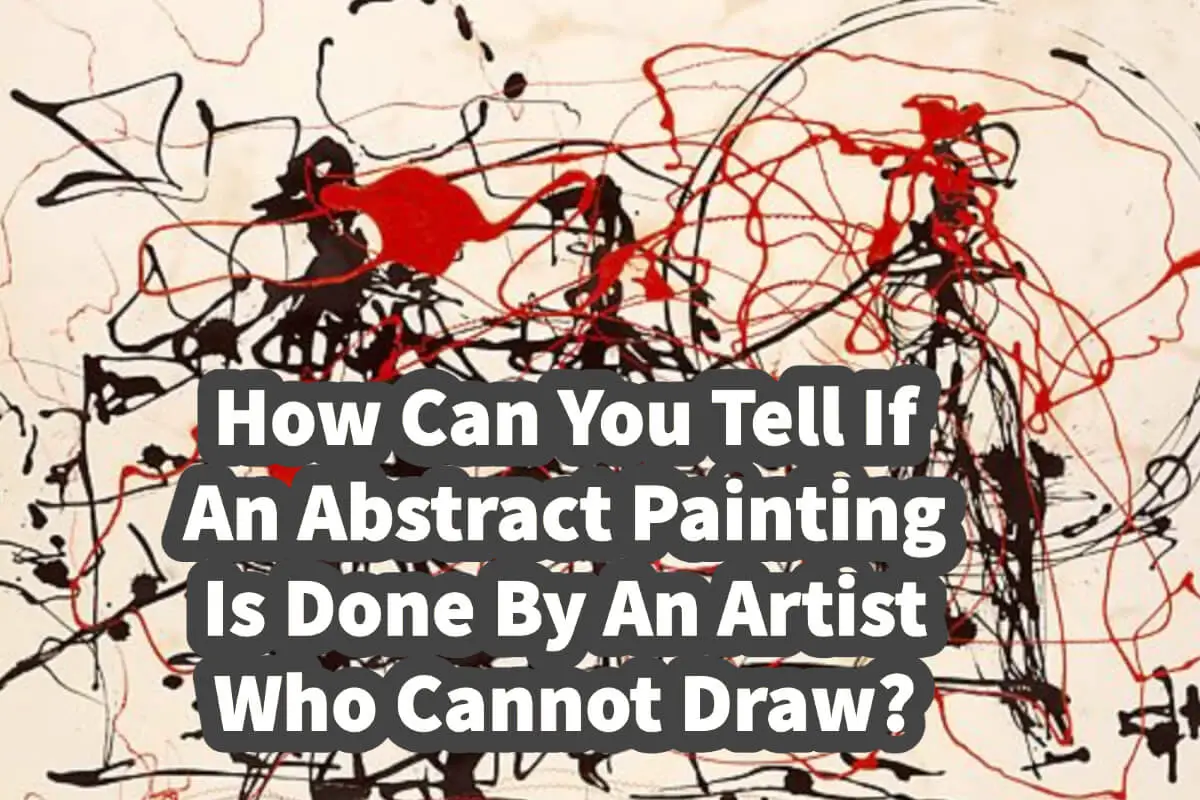How Can You Tell If An Abstract Painting Is Done By An Artist Who Cannot Draw?
When an artist is trained in drawing, composition, and color theory, their formal or informal training is reflected in their artwork. You can tell the artist’s skills by executing the painting using their drawing, composition, and color theory skills.
Top artists usually have some training – whether formal or informal. They spend their life experimenting and perfecting their artwork.
An Abstract Artist’s Ability to Drawing
When you study the lives of great abstract artists, one of the main things you learn from their lives is that they went through formal or informal art training. Either they were self-taught but had a tutor; most graduated from University level art classes. There are very few artists who can pick up a paintbrush and automatically produce a great work of art.
Abstract artists trained and tutored in basic art skills like drawing, composition, and color theory exhibit these skills in their artwork.
Five Famous Abstract Artists – Their Art Education and Training
Let’s look at five of my favorite Abstract Artists; we can see that they all had some form of artistic education and training. This list is not a complete list of Abstract Artists, but these artists are some of my favorite Abstract artists.
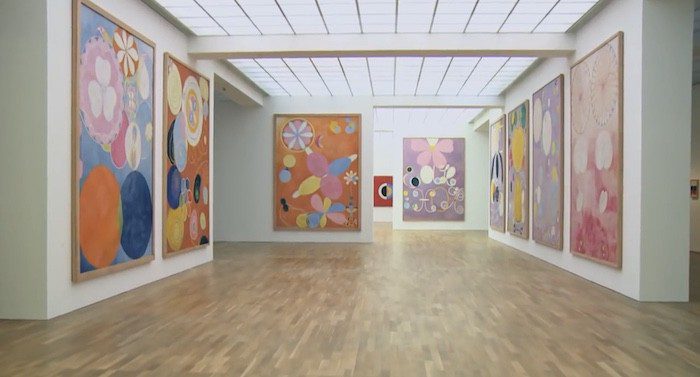
Hilma af Klint (1862 – 1944)
Hilma af Klint was a Swedish artist whose paintings are now considered the first abstract works of art. She is not a well-known name as her work was hidden from the world for many years.
When she died in 1944, she left her art to her nephew and stipulated in her will that the art be hidden for 20 years. When the artwork was open in the late 1960s, they discovered magnificent abstract art masterpieces that pre-dated the other well-known abstract artists.
Hilma af Klint spent her life perfecting her drawing skills, composition, and color theory skills. She was educated at Tekniska Skolan in Stockholm and later attending the Royal Swedish Academy of Arts.
Besides her abstract painting, she painted some flowers, people, and other subject matters. All the works she exhibited to the public were more in line with the commercial art for her day.
Learn more by reading Who is the Swedish Artist Hilma af Klint (1862-1944)?
When you look at Hilma af Klint’s abstract artwork, you can see how skilled she was. She was able to work with precision on large-scale paintings. She made no errors as she painted on the large canvas. She has a feel for color and the combinations of colors like no other artist. Hilma af Klint was a highly trained artist.
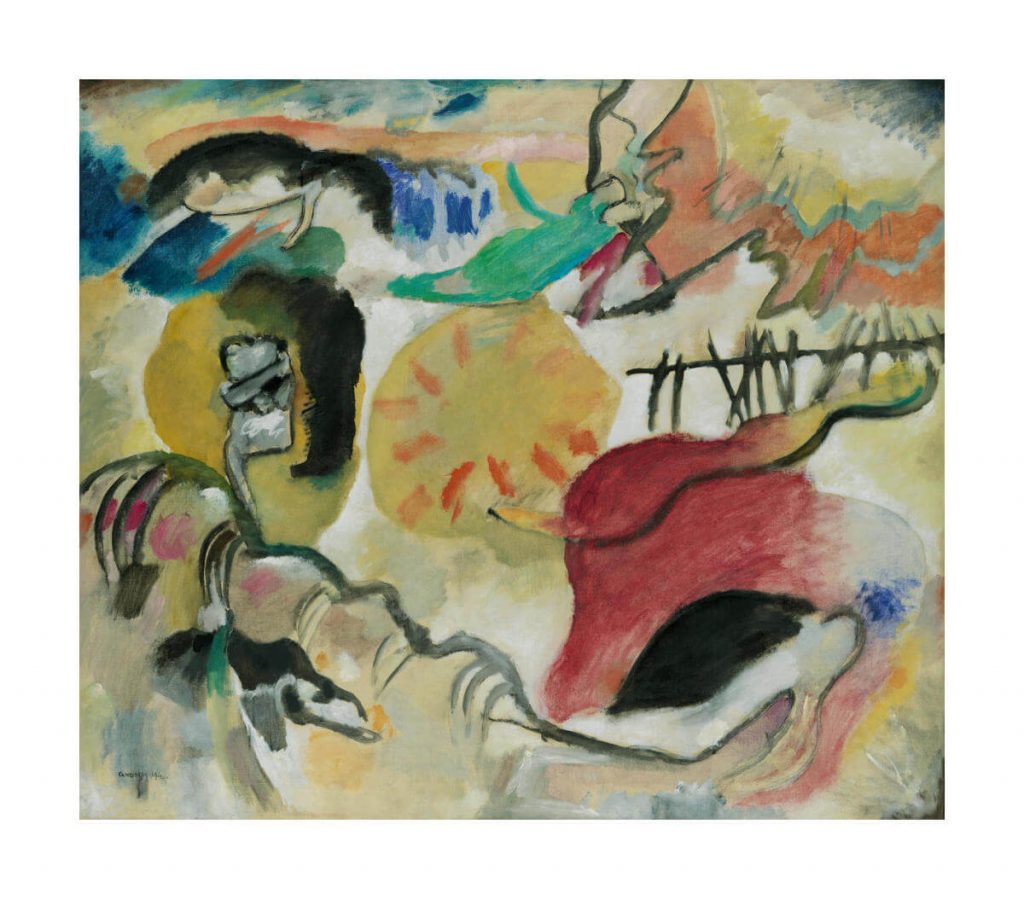
Wassily Kandinsky (1866 – 1944)
Wassily Kandinsky is a Russian painter who is generally credited as the pioneer of Abstract Art. He was born in Moscow but later lived in Odessa, in present-day Ukraine. While in Ukraine, he graduated from the Grekov Odessa Art School.
He later moved to Munich and studied first at the Anton Azbe private art school and later at the Academy of Fine Arts. At one time, he was a teacher at the Bauhaus School of Art and Architecture.
With the outbreak of wars and turmoil in Europe, he moved to France, where he lived until he died.
Wassily Kandinsky was also thought of as the pioneer of abstract painting during the early 20th century until some work by Hilma af Klint has surfaced with older abstract paintings than his artwork. Kandinsky believed that geometric forms, lines, and colors could express the artist’s inner life.
In Kandinsky’s painting, as shown above, “Improvisation 27 (Garden of Love II),” abstract scenes of a garden can be made out. You can see some abstract references to animals, people, and green plants.
You can see the artistic fundamental skills and training that Kandinsky had in using colors; your eyes naturally wander around the canvas with the colors he chose and where he placed them. Kandinsky was highly skilled in not only drawing but also art composition and color theory.
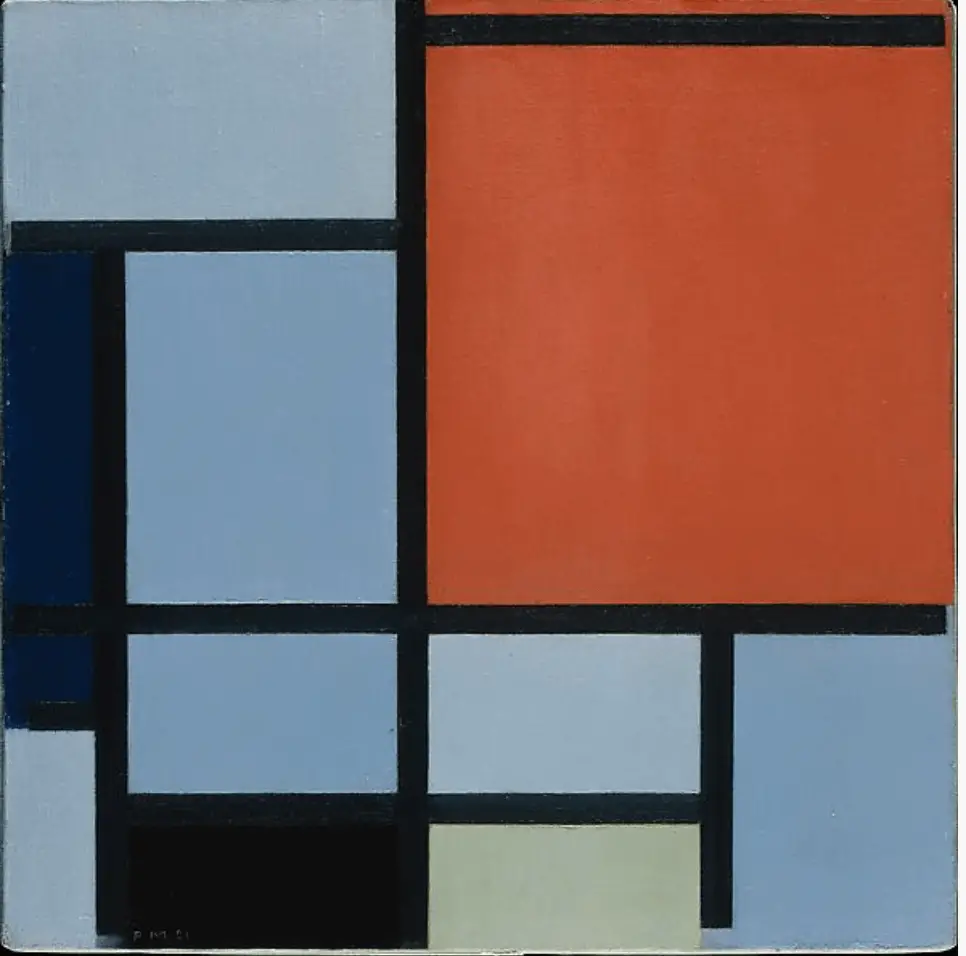
Piet Mondrian (1872 – 1944)
Pieter Cornelis Mondriaan changed his name in 1906 to Piet Mondrian; he is a Dutch Abstract artist. Piet Mondrain is also known as one of the founders of abstract art.
During his lifetime, Mondrain changed his direction from figurative painting to an abstract style. He was into geometrics shapes and working with only geometric shapes on his canvas.
He was trained at the “Rijsakademmie van Beeldende Kunsten” school or Academy of Fine Art in Amsterdam. Like many other artists, he eventually made his home as Paris. Mondrian combined his spiritual beliefs with his art.
Eventually, Mondrain moved to London, then to New York City. He died in New York in 1944.
Piet Mondrian’s painting above “Composition” is one of Mondrain’s early abstract works. In this early abstract work of art, you can see the precision of the lines and shapes he painted while at the same time understanding color theory and composition.
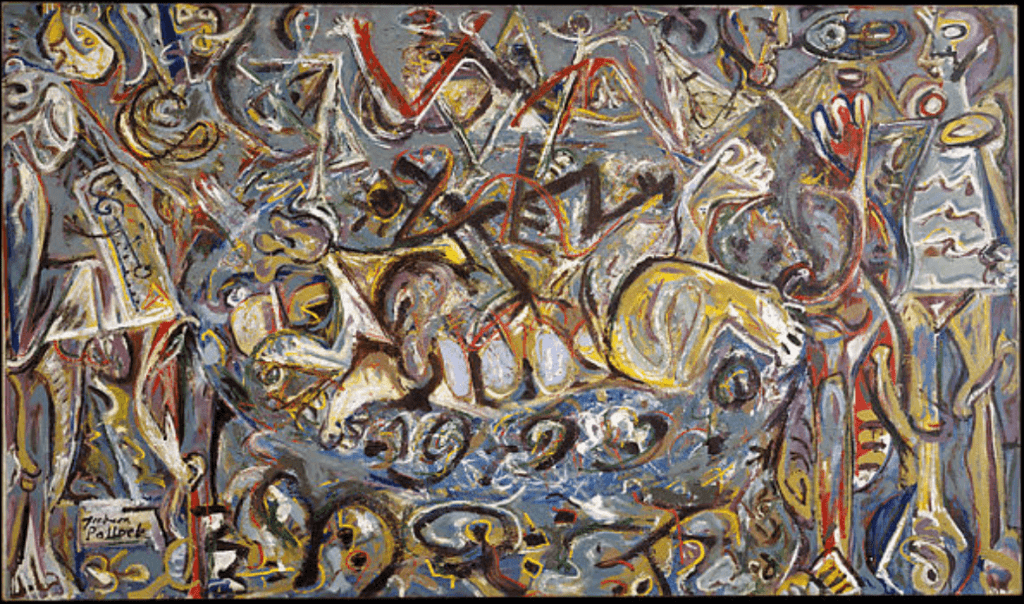
Jackson Pollock (1912 – 1956)
Paul Jackson Pollock is an American painter who was a significant figure in the abstract expressionist movement. He is widely known for his drip technique, where he would drip paint or throw paint on the canvas.
Pollock was born in Cody, Wyoming but spent most of his formative years in Arizona and California. He was expelled from several high schools in Los Angeles. In 1930 he followed his older brother Charles Pollock and moved to New York City.
Both Charles and Jackson Pollock study art under Thomas Hart Benton at the Arts Students League in New York City. In the early 1930s, Jackson Pollock spent a summer touring the western United States with his teacher Benton and Glen Rounds, a fellow student.
The drip art period is Pollocks most famous works of art. He became famous in 1949 after a four-page spread about him and his career appeared in the Life Magazine. The Life Magazine asked the question,” Is he the greatest living painter in the United States?”
Pollock was married to the artist Lee Krasne; his alcoholism and infidelity marked their marriage. He died in 1956.
Discover more by reading Who is the American Artist Jackson Pollock (1912-1956)?
The painting above, called Pasiphaë (1943), is an excellent example of Pollock’s work and artistic complexity. This work comprises dozens of colored drawings, all on the canvas. To mix these colors, do these drawings requires skills in painting, drawing, composition, and color theory.
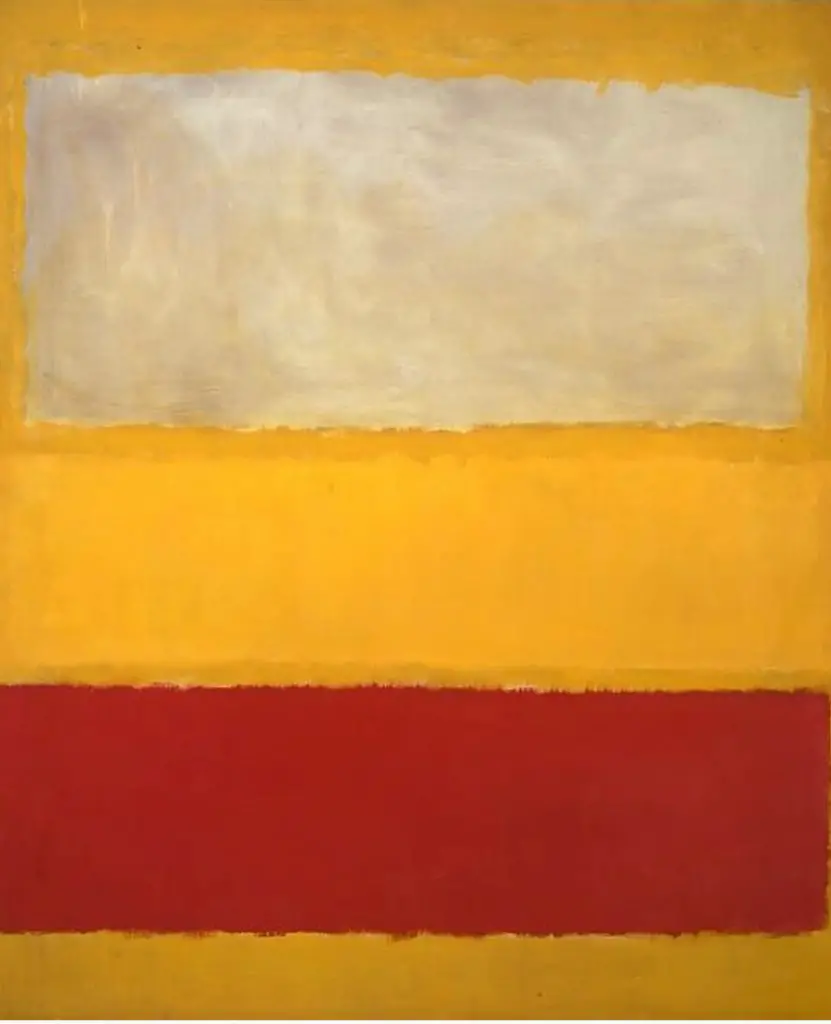
Mark Rothko (1903 -1970)
Mark Rothko was born in Russia (now present-day Latvia) as Markus Yakovlevich Rothkowitz. His name was anglicized in 1940. He came to the United States when he was about ten years old. His family moved to Portland, Oregon, but eventually, he moved to New York City.
Rothko graduated from High School in Portland and later attended Yale University. He dropped out of Yale University and never completed his degree.
Though he did not have an art degree, he attended classes at the Art Student’s League in New York City and enrolled in the Parson’s School of Design. At the Art Student’s League, he studied under Max Weber and at Parson’s under Arshile Gorky.
Rothko did not subscribe to anyone kind of school or movement, even though he is usually associated with the Abstract Expressionism movement.
Rothko was trained at the Art Student’s League and Parson’s School of Design in New York; he also studied under, associated with, or worked with many different types of artists.
Mark Rothko’s No. 13 (White, Red on Yellow) is an excellent example of his Abstract style. Simple yet elegant. He said his paintings are meant to be viewed up close and personal. You can see how the rectangles will float off the canvas. To be able to produce such an elegant painting. He had to have artistic skills in painting, drawing, composition, and color theory.
Importance Of Art and Training
As we learn from these five famous abstract artists, every single one of them had some in-depth artistic training. They were all well versed in the basics of art, such as drawing, composition, and color theory.
The answer to the question – “How Can You Tell If An Abstract Painting Is Done By An Artist Who Cannot Draw?” You can see it in how they can execute their artwork. When an abstract artist is trained in drawing, composition, and color theory, this will training comes out in their artwork.
An artist, including an abstract artist, can be self-learned or not have a degree, but for an artist to be successful and be genuinely great, they need to have a solid fundamental foundation of drawing, composition, and color theory.
A person who does not have the training may have some basic skills, but if they do not fully understand drawing, composition, or color theory, they usually have a hard time producing consistently excellent artwork.
You can be self-trained and be successful as an artist – any artists are – but at the same time to fully understand drawing, composition, balance, symmetry, and color theory can help your art to be consistently excellent.
At Anita Louise Art, #ArtThatMakesYouSmile, we believe in drawing, composition, and color theory training for all artists. We love abstract art.
If you are interested in my art, you can find out more by clicking here. If you are interested in what inspires me and my paintings, you can discover more by clicking here.
We have a free newsletter and would love to be part of our community; you can subscribe to the newsletter by clicking here. If you have any questions, I would be happy to talk to you any time. You can reach me, Anita, by clicking here.
Related Content
What Is The Cultural Significance Of Abstract Expressionism Art?
The cultural significance of abstract expressionism art is it was a forerunner for the cultural changes that took place in the United States in the 1950s and 1960s. The Abstract Expressionism movement started after World War II in the 1940s and continued into the 1950s. The world saw great cultural shifts in the 1950s and the 1960s.
You can learn more by reading What Is The Cultural Significance Of Abstract Expressionism Art? by clicking here.
What Type Of Artist Is Andy Warhol?
Andy Warhol is a Pop Artist; he is one of the Pop Art Movement’s major figures. Andy Warhol’s artwork explored the relationship between what is known as the mass popular cultures of his day and art. He used many iconic American objects in his art and also painted many celebrities.
You can read more by reading our blog What Type Of Artist Is Andy Warhol? by clicking here.

